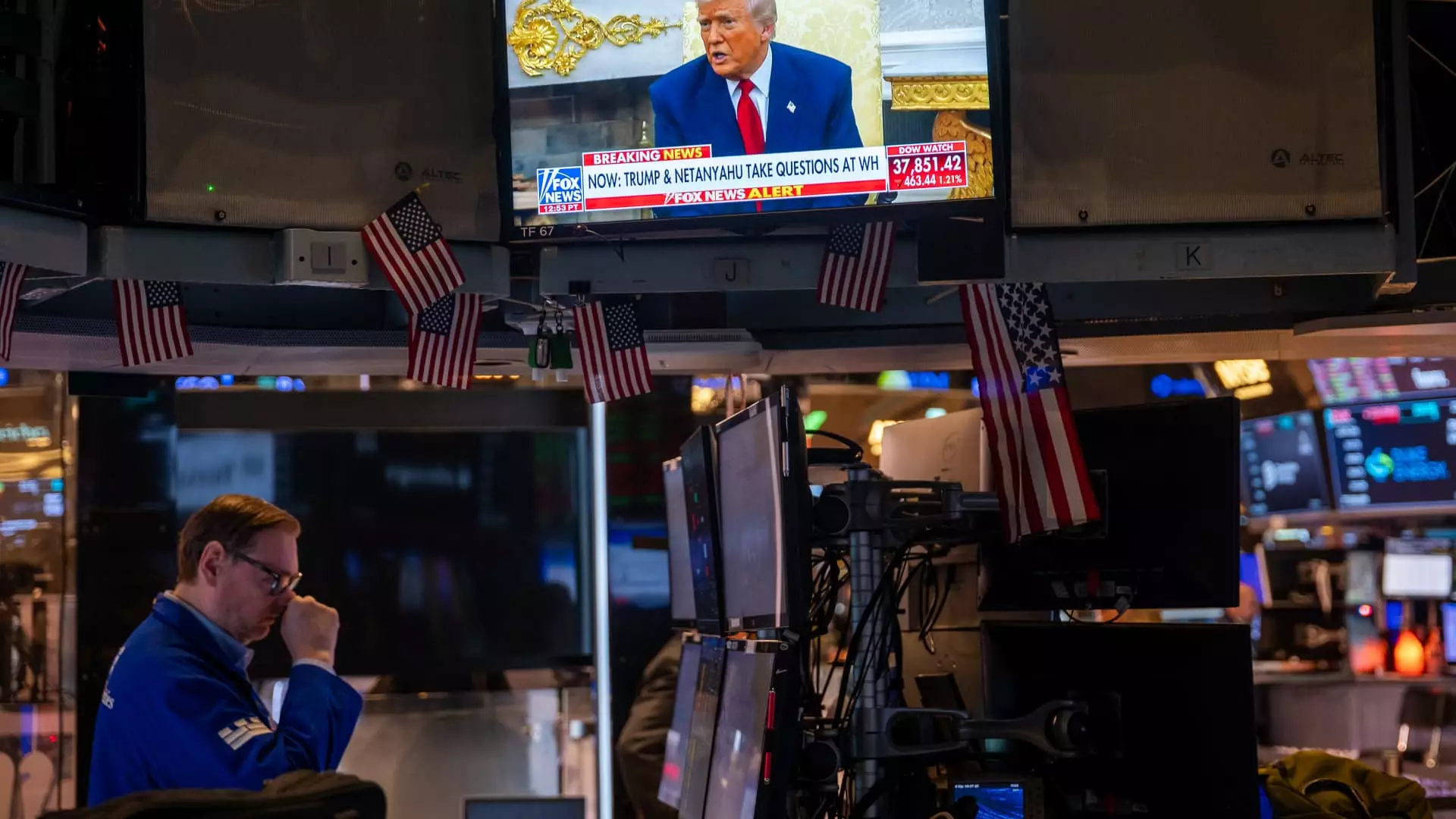In the realm of U.S. politics, the first 100 days of a presidency are often treated as a critical barometer for future performance. The metrics of success can vary, but when it comes to economic indicators, particularly stock market performance, the trends can often herald what lies ahead. President Donald Trump’s initial days in office reflect a disconcerting trajectory that has raised alarm bells among investors and economic analysts alike. A staggering 7.9% dip in the S&P 500, marking the lowest performance for a new presidency since the 1970s, paves the way toward analyzing what went wrong in Trump’s early tenure.
The post-election euphoria that propelled the stock market to unprecedented heights has been utterly dismantled, revealing a stark contrast between hope and reality. From a 3.7% increase between Election Day to Inauguration Day, worrisome indicators have emerged and driven the market into tumult. The comparative analysis with past presidencies, especially Richard Nixon’s tumultuous first 100 days, brings forth unsettling parallels. Nixon, too, faced the ramifications of poor economic strategy, leading to a depressed economy completely engulfed in the 1973 recession. However, whereas Nixon’s failures were compounded by the fallout from scandal, Trump’s struggles appear to originate from contentious trade policies and uncertainty in economic leadership.
Euphoria to Dismay: An Economic Rollercoaster
What catalyzed this swift downturn? The answer often lies in Trump’s rapid shift from promises of economic revival to an aggressive trade stance that left investors reeling. His early days were rife with bold proclamations, yet the investors who once braced themselves for tax cuts and deregulation now found themselves grappling with tariffs that carried the potential to stifle growth and inflate prices. The market’s swift nosedive in April, during which the S&P lost 10% in mere days, captures how vulnerable the market had become amidst these policy shifts.
Trump’s declaration of “reciprocal” tariffs not only unsettled trade partners but also incited fears of a looming recession. Investors are inherently averse to uncertainty, and when Trump walked back on some of his aggressive trade measures, attempting to placate the market, it seemed more like a desperate attempt to regain investor confidence rather than a sustainable economic strategy. Nevertheless, the damage had already been done; bear market territory beckoned menacingly on the horizon.
The Wall Street Reaction: Seeking Clarity Amidst Chaos
As the market continues to struggle, various analysts and financial advisors echo a sentiment fraught with uncertainty. Jeffrey Hirsch, editor of the Stock Trader’s Almanac, is among them, emphasizing that without clarity from Washington, the market remains perilously vulnerable. The uncertainty surrounding Trump’s policies poses substantial risk; investors find themselves stranded in a psychological battle between hope for government-induced economic growth and the looming specter of recession.
This jittery atmosphere has bred a pervasive anxiety as many analysts forecast further downturns. Stock market gains from the prior election have now been entirely erased, raising eyebrows on Wall Street. There’s a potent lack of trust in Trump’s economic acumen. The chaos raises questions not only about Trump’s economic policy execution but also about the implications for an administration that markets fundamentally viewed as disruptive.
A Cautiously Optimistic Future? A Complex Outlook Ahead
Despite the gloom that hangs over Trump’s administration, is there room for optimism? The shortened lifespan of policy initiatives, combined with the robust economy he inherited, suggests that he could still pivot toward a more accountable approach, particularly in terms of regulatory frameworks and tax reform. However, the path to that optimistic future is riddled with significant hurdles.
Given the first 100 days, Trump’s administration must recalibrate its strategy and seek to deliver clear, coherent messages that restore stability and confidence. Until policymakers embark on this journey of reevaluation, the stock market will likely continue to navigate the choppy waters of uncertainty—a stark reminder that in politics, as in economics, the unpredictable often reigns supreme.

